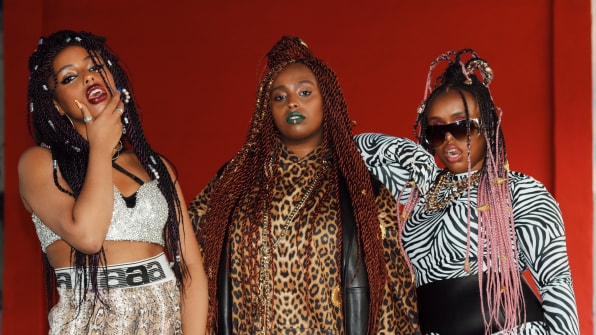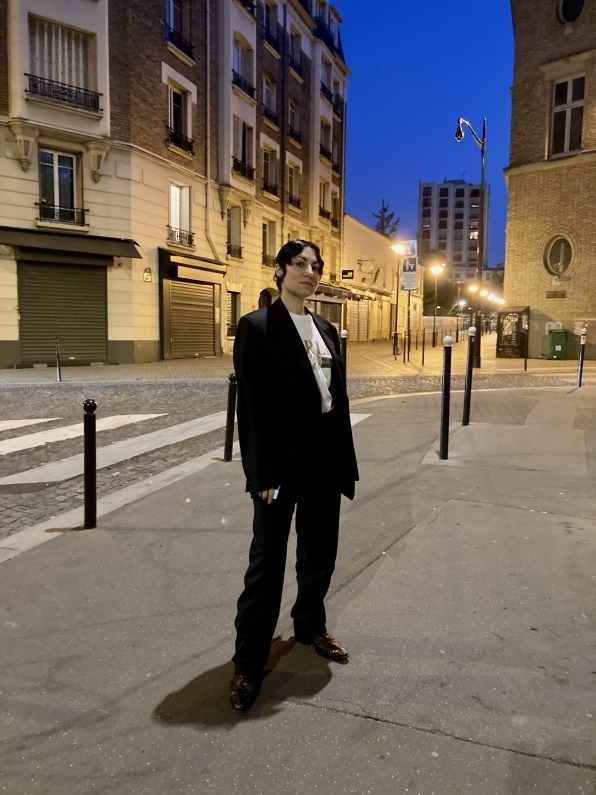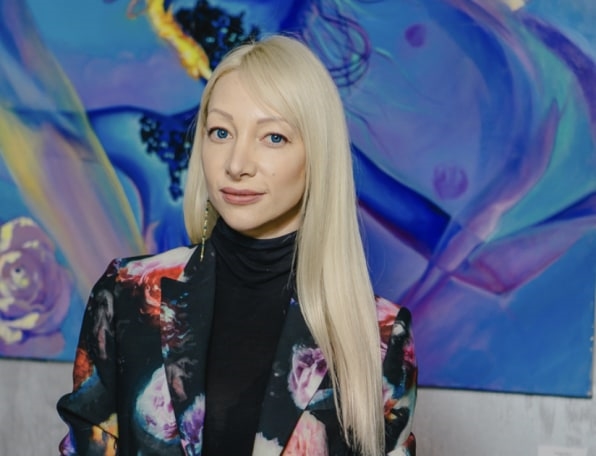How Ukrainian artists are resisting Russia’s war
Since Russia’s invasion of Ukraine six months ago, more than 12 million Ukrainians have fled the country. As Ukrainians continue to be displaced across Europe, there’s also the very real fear of Russia’s plans to displace Ukrainian culture altogether.
Even before declaring their independence in the 1991, Ukraine has always differentiated their own culture from Russia’s. The food, the language, and art is unique to Ukraine, despite Russian propaganda stating otherwise. The Russian army has targeted schools, hospitals, and Ukrainian homes—but they’ve also destroyed Ukrainian art galleries and looted an estimated 2,000 artworks. The Cultural Heritage Monitoring Lab, run by the Virginia Museum of Natural History in association with the Smithsonian, has already logged more than 110 memorials destroyed by Russian weapons.
Art can be dismissed as something frivolous, especially during times of war. However, art offers a lens into understanding a situation that seems incomprehensible. It can be a means of reigniting optimism during trying times and even a means of fighting back without the use of weapons.
Since the invasion, many Ukrainian artists have gone on fundraising tours, performed poetry at the Grammys, and have even joined the war itself. We spoke to three Ukrainian artists across different disciplines to hear about their thoughts about creating art and their hope for a better future.
Fo Sho, musicians
The Ukrainian hip-hop trio fled from Kyiv to Germany at the start of the war. During this time. sisters Betty, Miriam, and Siona Endale haven’t written any new raps or songs, nor have they turned on the radio. “You can imagine we’re musicians and we couldn’t listen to music,” Betty says. “We’re constantly watching the news, chatting with our people. We also work on evacuating people and gathering donations for the needs of the army.” But this invasion isn’t much of a surprise to them. To Fo Sho, Russian president Vladimir Putin’s actions in Crimea back in 2014 hinted at larger plans in the future. And that intuition led them to write the song “U Cry Now” for the Eurovision contest in 2020.

[Photo: Courtesy Fo Sho]
They didn’t win. But Betty says they knew Ukraine would become a “hot topic.”
“The song has become so relevant now,” she says. “It’s exactly about the war.” As hip-hop artists, the roots of their music is grounded in rebellion and protest. The war hasn’t defeated them, but only gives them more ammo to go after their target: Putin. But for now, the band is focusing their efforts on helping out in whatever way they can. It’s a common thought that artists are meant to conceptualize a crisis as quickly as they can. But for Fo Sho, they won’t be entering the studio anytime soon as they prefer to wait until the dust finally settles.
“In the beginning my first reaction was anger. I was really angry so I wrote a rap about Putin, but I’ll finish that song later,” Betty says. “I want to release it when we’re a bit closer to a victory, because the song is very bold. It’s a protest song.”
Yelena Moskovich, author, visual artist
Like everyone else, poet and author Yelena Moskovich has been reading and learning more about the history that has led to the war in Ukraine. And she notes that as an artist, she feels she’s in a position to be a political ambassador of sorts for her country. “Questions like ‘how are you’ are well-meaning, but also fatiguing, because not only are you sharing how you are but you’re also somehow like the representative for the geopolitical situation,” she says.

[Photo: Courtesy Yelena Moskovich]
Moskovich’s outlet has been making personal collages with photos of her family in Ukraine. “It was a bit unexpected,” she says. “It came quite intuitively.” And that’s been central to Moskovich’s approach to creating during a time of crisis. “There’s nothing wrong with struggling or stepping back. I don’t know why we have such a pressure to create despite everything,” she says of not immediately turning around art about Ukraine for public consumption.
“There’s a moment to mourn and there’s a moment to not be productive,” she says. “Why not use that time to reconnect to even a worthiness in this state that feels completely unproductive?”
Lika Spivakovska, artist
Before the war, Lika Spivakovska owned two art galleries in Ukraine. And as an artist herself, she understands the importance of preserving art. Many galleries have rushed to move their works to more secure places as buildings continue to be destroyed. But Spivakovska figured the art would be even safer in another place: the internet. When the Russians made the move to burn down her art gallery, she and others escaped with what they could. She asked Ukrainian artists to submit their works and she partnered with an NFT gallery in Puerto Rico to auction them off with proceeds going toward helping Ukraine.

[Photo: Courtesy Lika Spivakovksa]
“I will tell you that I had no idea how NFTs works at all,” Spivakovska says. “But time was running fast, so I just did it.” The Ukraine Gallery is on OpenSea and has gathered nearly 600 works, which Spivakovska sees as a running chronicle of the conflict.
“This is war by the eyes of our artists and children who suffer from war,” she says. “We show the world what we are facing and what we are thinking and what we’re feeling. I think this just proves that Ukrainian people are very talented people with kind hearts and beautiful souls—we even scream and cry by doing art.”
Fast Company , Read Full Story
(35)


